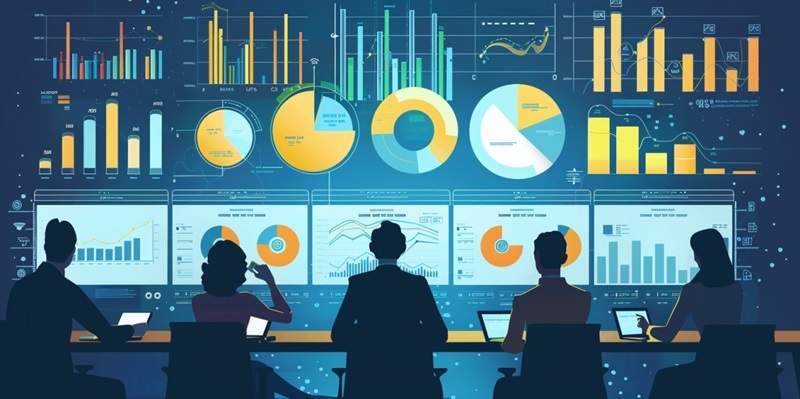In the current era of data dominance, human resources (HR) departments are increasingly turning toward people analytics to fine-tune their strategies and demonstrate a clear return on investment (ROI). People analytics is the transformative force driving strategic HR decisions in contemporary business spheres, leveraging employee data in operational, managerial, and strategic contexts. By adopting a systematic approach that intertwines data analytics with HR practices, companies can realize substantial improvements in workforce performance and business outcomes.
Establish Defined Objectives
Fundamental to the successful application of people analytics is the establishment of well-defined objectives that resonate with the broader goals of the organization. Whether it’s seeking to foster a culture that nurtures talent, enhancing employee satisfaction and productivity, or striving to refine leadership development frameworks, the initial step is the formulation of explicit targets that align with the company’s vision and mission. When objectives are clearly delineated, people analytics can be directed to address specific challenges, ensuring a focused approach that can be methodically measured and evaluated.
These objectives must encapsulate the needs of both the workforce and the business to yield the desired impact. This dual focus guarantees that initiatives are beneficial not only in terms of individual employee growth but also in promoting the company’s operational and financial success. By setting precise objectives, HR departments create a benchmark for success and a lens through which to view the efficacy of their people analytics endeavors.
Gather and Examine Data
Data serves as the lifeblood of any people analytics initiative. The process begins with the meticulous collection of relevant data points—from turnover rates and employee engagement levels to performance metrics and satisfaction indices—which constitute the raw materials for profound insights. Investing in suitable technology and tools is crucial; these enable the aggregation, storage, and analysis of data in a manner that is both time-efficient and comprehensive.
The examination and interpretation of this data necessitate a specialized skill set within the HR team, including statistical proficiency and business acumen. An analytical mindset empowers HR professionals to discern patterns, identify trends, and isolate concerns impacting workforce dynamics. Through a systematic analysis of the gathered data, hypotheses can be tested, correlations understood, and strategic decisions made with a higher degree of confidence and objectivity.
Derive Actionable Recommendations
With a solid foundation of data, the next pivotal step is to translate the insights gained into actionable recommendations. This involves turning the data-derived evidence into strategic initiatives or policies that can positively influence HR outcomes. These insights enable HR leaders and business executives to make decisions grounded in fact, minimizing the influence of subjective judgments or intuition and emphasizing measurable impact.
Actionable recommendations may range from targeted training programs to address skill shortages to adjustments in recruitment strategies that align with talent analytics. The utility of these recommendations is amplified when they act as a catalyst for meaningful and purposeful change, directly enhancing HR functionality and contributing to achieving organizational objectives.
Integrate with Corporate Strategy
In today’s data-driven environment, HR departments are harnessing the power of people analytics to enhance decision-making and prove ROI. This innovative approach involves using employee data to guide HR tactics in everyday operations, management, and strategic planning. Integrating data analytics with HR functions enables organizations to elevate workforce efficiency and business performance. Companies focused on insightful data handling can align their people strategy with business objectives, fostering a data-informed culture within HR practices. By doing so, people analytics becomes a cornerstone for strategic HR initiatives, serving as a crucial asset in the optimization of talent management and the achievement of competitive advantages. This synergy between analytics and human resources is not just a trend; it’s a new paradigm for the modern business landscape, leading to more informed decisions and tangible business success.

